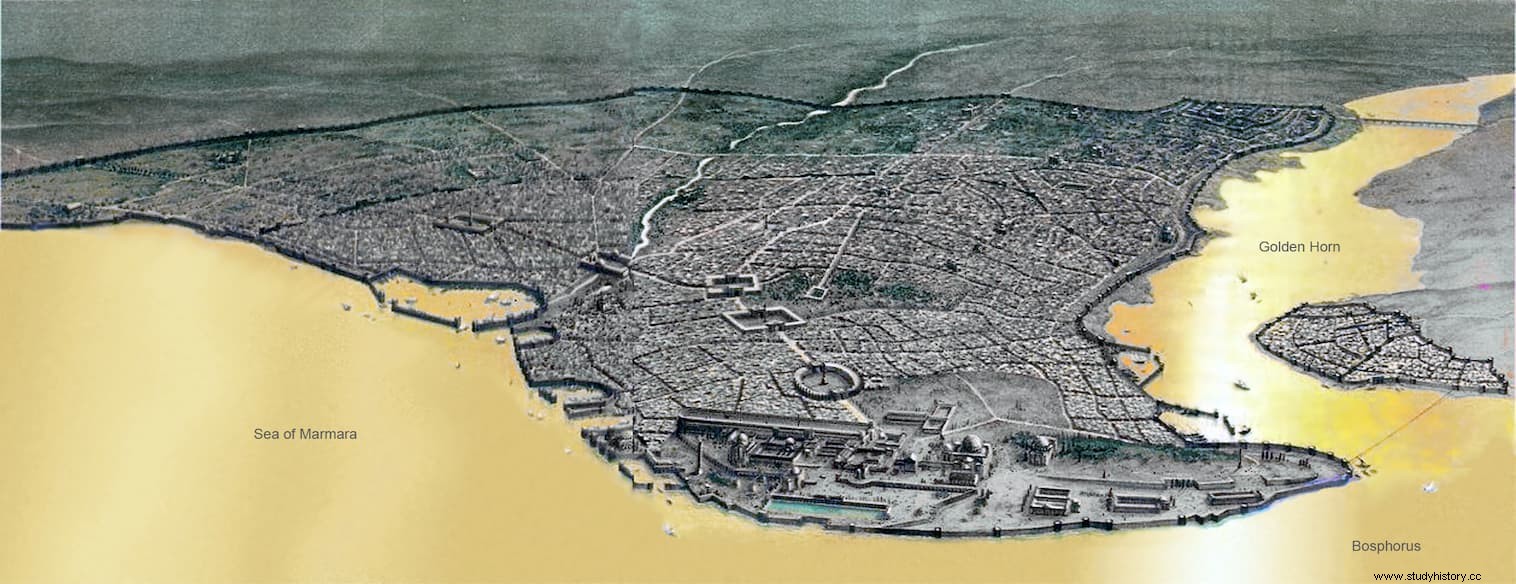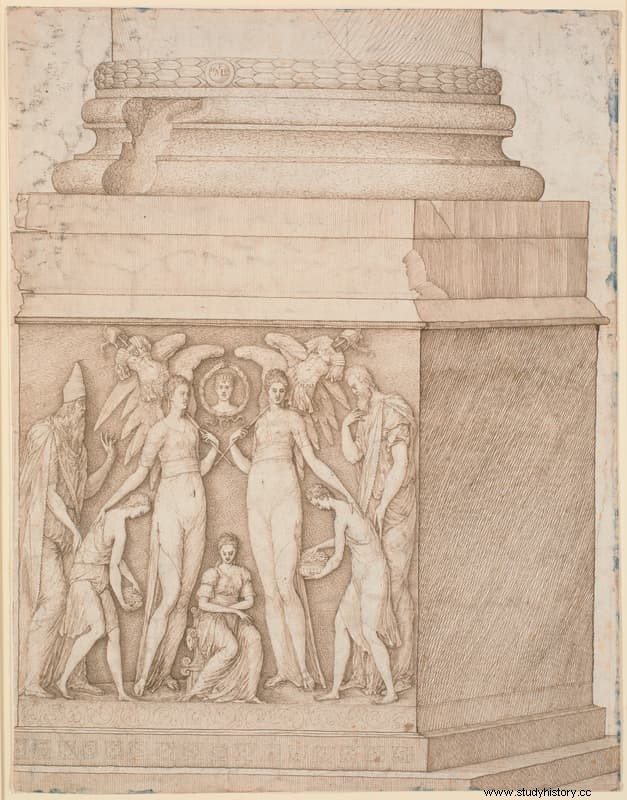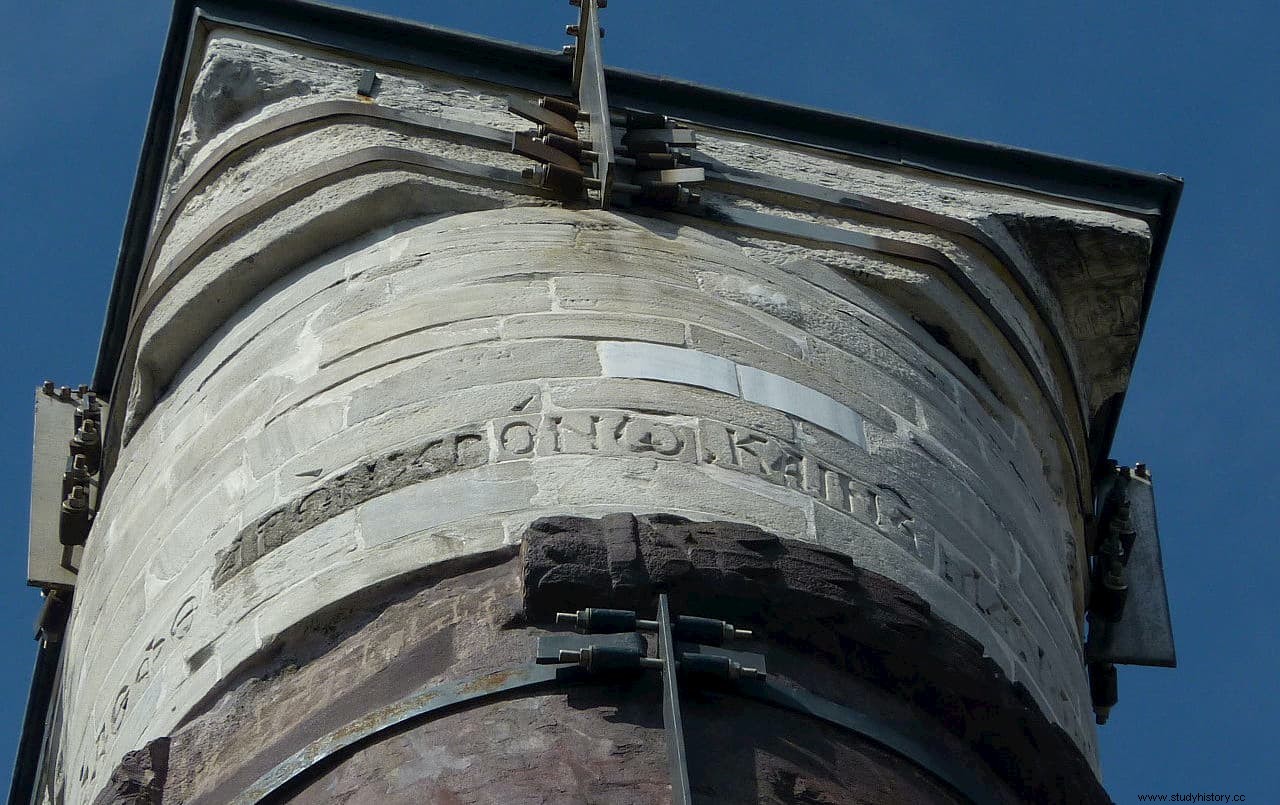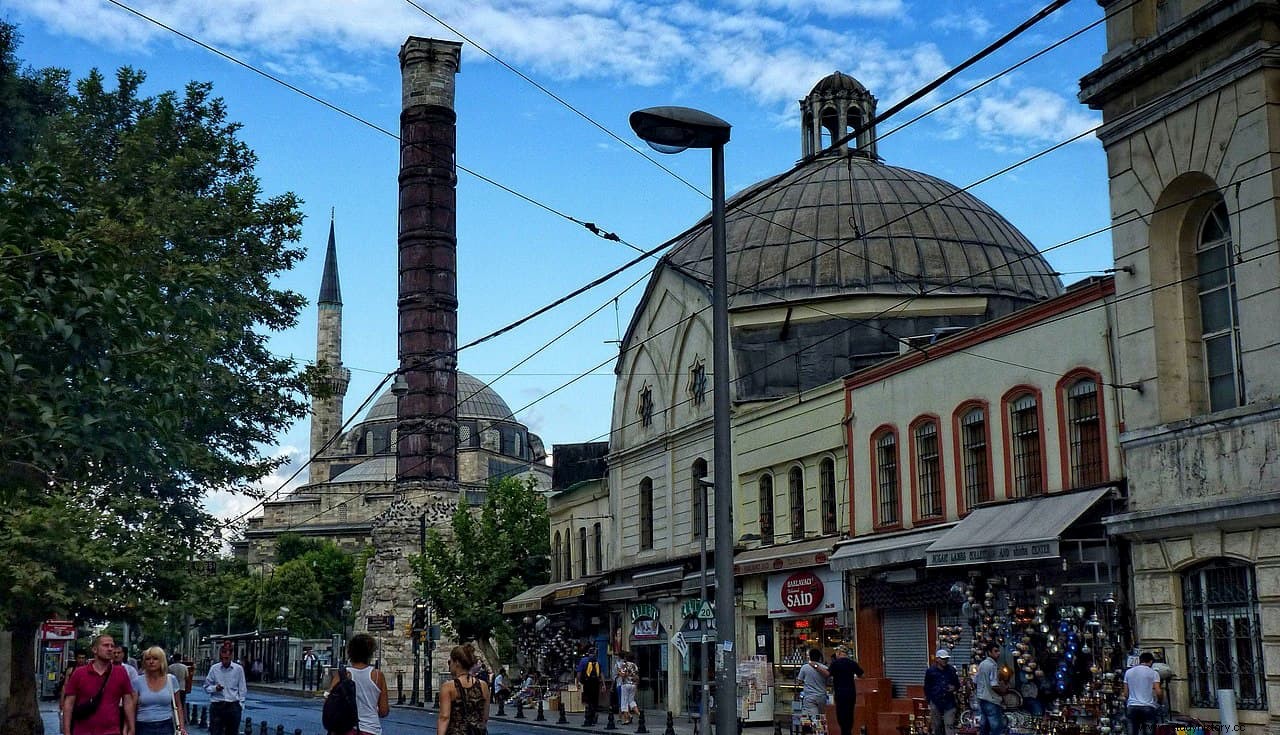After his victory over Licinius (Eastern Emperor) in 324 AD. Constantine remained the sole ruler of the Roman world, ending the period of the tetrarchy, thus becoming the first emperor to rule alone since Diocletian.
Precisely the final place of the defeat and surrender of Licinius (who was married to Constantia, Constantine's sister) was the ancient Greek colony of Byzantium, located at the entrance to the Bosphorus Strait, in a strategic place from where navigation was controlled. between Eastern Europe, the Balkans, the Aegean and the Mediterranean.

For this reason, among other reasons, it would be the one chosen by Constantine to become his new capital, after the serious disturbances of the year 326 that made him decide to leave Rome. Earlier it had occurred to him that he could rebuild Troy in order to make it the center of the empire. But faced with the potential of Byzantium he changed his mind.
Work began almost immediately with no expense spared, and the city was embellished with works of art brought from other cities of the empire. But also with monuments built for the time of the inauguration. One of those monuments was already completed by 328 AD, and on May 11, 330, when Constantine officially inaugurated the new city with the name of Constantinopolis , stood in the center of the forum. It is still there today.

This is the so-called Column of Constantine , which the Turks call Çemberlitaş. Today it stands on the Yeniçeriler Caddesi in the Old City of Istanbul, which corresponds to the Mese, the old main street of Constantinople, where emperors celebrated their triumphs, and is the only remaining monument of the founding of the city.
At the time of his consecration that May 11, 330 AD. the column consisted of long porphyry drums (brought from Heliopolis in Egypt) with bronze inlays between them, which stood on a pedestal decorated with reliefs. It is not known exactly how many drums it was made up of, and estimates indicate between 7 and 11. It was crowned by a statue of Apollo Helios with a spear in his left hand and a globe in his right. This is how it appears in the Tabula Peutingeriana, in which it is represented next to an image of Constantine. The height of the column alone reached 23.40 meters, while the estimate of the height of the monument, including the statue, must have been about 37-40 meters. Including the base, the total height would have been close to 50 meters (about the height of the Colosseum in Rome).

Not much is known about the statue. The sources agree that the head was adorned with a crown of seven solar rays, perhaps an attempt by Constantine to create a syncretism between the cult of the Sun and Christianity. However, some sources also claim that the head had been replaced by one that represented the emperor himself, which would be in line with the inscription:To Constantine, who shines like the sun…
The column stood on a square pedestal, now lost, 8.35 meters on a side. On it were reliefs and an inscription (quite possibly later) that read:You, Christ, are the creator and ruler of the world; to you I have consecrated this city that is yours, and the scepter and power of Rome. Save it and save it from all harm .

One of the sides of the base is reproduced in a drawing by Melchior Lorck dated 1561. On it is a bas-relief whose center is an image of Constantine. Below him a female figure on a throne, which can be interpreted as the Tiqué of Constantinople. Two wins, nikes , winged women in armor lead two boys carrying gifts for the city or the emperor. Behind them appear two bearded characters, perhaps Persian or Germanic. However, there is no proof that this bas-relief was part of the original column.
In the year 416, that is, 86 years after its construction, lightning struck the column, damaging it considerably. For this reason, Emperor Theodosius II ordered that reinforcing iron rings be placed between the drums. Those iron rings have been changed and renewed over the centuries.
In 1079 it was struck by another lightning strike, and in 1106 a storm brought down the statue and the last three drums on the column. Around 1150 Emperor Manuel I Komnenos restored it and placed a cross on top. Registration is still visible: το θειον εργον ενθαδε φθαρεν χρονω καινει μανουηλ ευσεβης αυτοκρατωρ (the pious Manuel strengthened the sacred monument, worn out by time) .

The bronze inlays that covered the joints between the drums were looted by the Crusaders in 1204, and the cross would be removed by the Ottoman conquerors in 1453. In 1779 an earthquake caused a fire that destroyed almost the entire area and left black marks all over the area. the column (hence they began to call it burnt column ). During the restoration work, the base and the first drum of the column were hidden under a layer of massive masonry, and today they are about 2.50 meters below ground.
A legend dating back to the 9th century says that Constantine kept various relics in a cavity at the foot of the column:the Trojan Palladium, Noah's axe, a splinter from the cross of Jesus, the baskets of loaves and fishes, and others. various other artifacts, real or imagined. That is why the Danish theosophist Carl Vett undertook excavations in 1929, which evidently found no trace of such objects.

However, he found the pavement of the ancient forum, at a depth of 2.33 meters, and also a vault at the base of the column, at a depth of 4.6 meters, which some researchers identify with the chapel of Constantine that they mention. the sources. This chapel was located on the north side, and is mentioned by Constantine VII Porphyrogeneta in his De Ceremoniis , written in the first half of the 10th century.
Restoration work on the column began in 1955 and was completed in the early 2000s.
